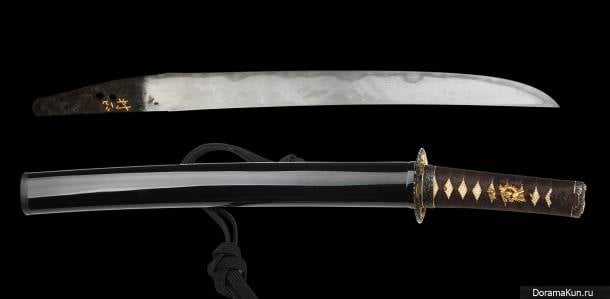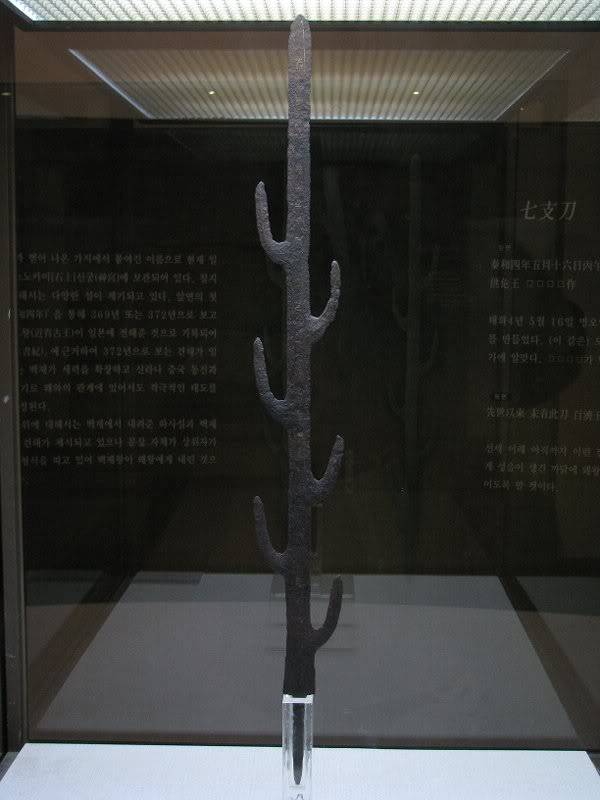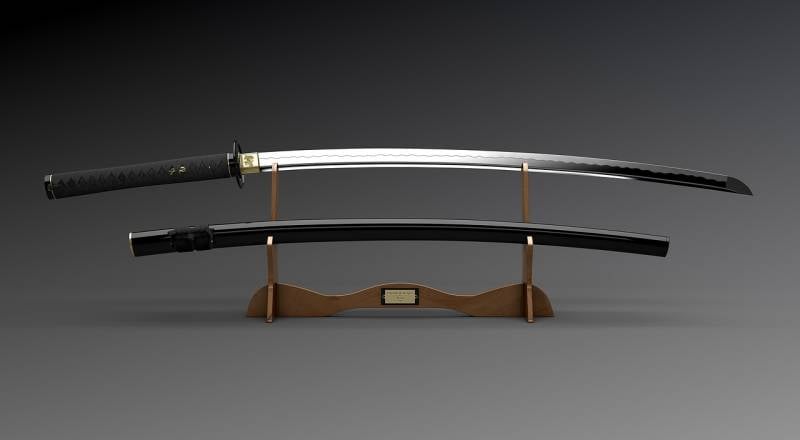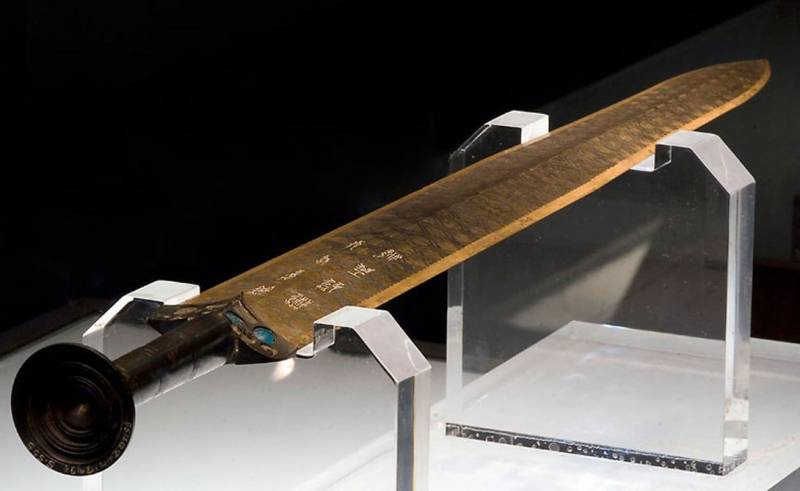5 vintage and legendary swords of Asia

Bloodthirsty Swords of Muramasa
Muramasa is a famous Japanese blacksmith and swordsman. He lived in Japan during the Muromachi period, that is, approximately in the XNUMXth century, and was distinguished by the fact that he founded armory school named yourself. Muromas' swords (and this was not one, but a whole series of blades) were distinguished by quality and were famous for their unusual sharpness, which made them very popular in a military environment. Muramasa is supposedly a whole dynasty of gunsmiths, as historians distinguish several masters with this name. The first of these was Senji Muramasa, whose work was known back in the 1460s.
Legend has it that Muramas’s blade is cursed and infects the wearer with an insane thirst for blood. If he dusts himself in a sheath for a long time, the sword can even rebel against his master and force him to commit suicide in order to find a more suitable warrior after death. Muramasa is often contrasted with another famous master, Masamune, which will be discussed below. The reality, however, most likely was not so terrible: given the excellent quality of the blades, the owner of an expensive sword expectedly won the fight much more often than he earned the glory of magic weapons for the products of the family of gunsmiths. Well, in feudal Japan, this was perhaps the best PR of all possible options!
Swords Masamune
It is often said that Muramasa and Masamune were contemporaries, but this is commonplace historical inaccuracy. One of Japan’s most famous gunsmiths lived at least two centuries earlier, from 1288 to 1328, at the end of the Kamakura era. He worked in the Sagami province and became famous for creating a revolutionary sword manufacturing technology for the 128th century - Sosyu. Japanese edged weapons of that period were fragile, since the source of iron was sand, rich in ore, which is very difficult to clean from impurities. Layered forging, where strips of steel with different carbon contents were welded together and forged several times (making XNUMX layers of steel), made the swords much stronger.
According to legend, Masamune’s swords give the wearer calm and cool blood, highly revered by Japanese soldiers and much needed during a real fight. They say that the master did not even sign his works - nobody could forge them anyway.
Seven sword

The bizarre blade of Nanatsusaya-no-tati (aka the “seven-petal sword”) was discovered in the Shinto sanctuary of Isonokami-jingu, in the city of Tenri, in 1945 year. Its shape indicates that this sword was most likely a ceremonial weapon and was not used in real combat: six curving branches depart from the blade, and the upper part of the blade appears to be the “seventh tooth”. The inscription on the blade states that this sword was presented to the Chinese emperor by the sovereign of Korea. Unfortunately, the sword was kept in terrible conditions, and therefore its appearance leaves much to be desired.
According to legend, this sword was presented to the semi-mythical Empress Jingu. Strange as it may seem, archaeologists are convinced of the veracity of this legend: it mentions both the sanctuary and the sword itself, while the age of the blade and the historical date of government of Jingu coincide.
Goujian Sword
Here is a more ancient, but much better preserved blade. His archaeologists found in 1965 year in one of the tombs in China. The sword is extremely remarkable: in 2500 years (and that’s how scientists estimate its age), the blade not only did not rust, but didn’t even become blunt: one researcher cut a finger by running a finger over it. The stainless alloy in the composition of the blade and the sheath, which practically does not allow the air inside, did their job perfectly well and did not allow time to spoil the artifact.
According to the most common version, the owner of the sword was Goujian, one of the rulers of the Yue kingdom. According to legend, he considered this sword the only standing weapon in his entire collection, and his beauty was "created by the joint efforts of Earth and Sky." Well, the Chinese Vans definitely had good taste.
Victory Sword
This sword is one of the royal regalia of Thailand, personifying military might and power of the monarch. The length of the blade is 64,5 cm, and its weight in the sheath is 1,9 kg. The gap between the blade and the hilt is decorated with gold inlay, depicting the god Vishnu riding a huge riding bird Garuda. Legends say that in 1784, Cambodian fishermen fished out this sword in the Tonle Sap lake and presented it to King Ang Young, who in turn decided to present the sword to his suzerain King of Thailand Rama I. As soon as the sword was delivered to Bangkok, from seven Seven bright lightning strikes the city from various sides.
Phra Sen Khan Chayashi (Phra Saeng Khan Chaiyasi) means "King's Wisdom" and serves as a reminder that the lord should wisely rule his subjects. Rama I made a magnificent sheath of gold encrusted with diamonds and other precious stones for the sword.



Information